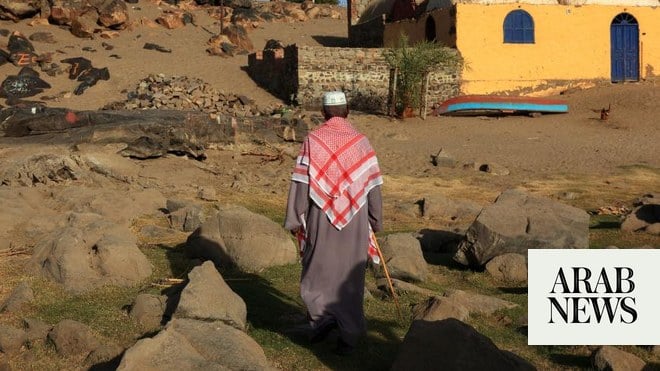
or William Wordsworth the Howgill Fells was a romantic landscape, for rewilders they could be home to wolves, and for farmer John Pratt, these hills are home. “I was hoping this day would never come. I shan’t say it will break my heart, but it will,” says Pratt, who is selling his sheep and retiring after 55 years of uplands farming. “I’ve had a flock of sheep since I was 14, so I’m ready for a break,” he adds.
The 69-year-old tenant farmer works seven days a week and takes six days of holiday a year. Since 1966 he has been renting Kilnmire Farm (with no heating in the house) on the edge of Ravenstonedale village in Cumbria with his wife, Hazel. He doesn’t drink alcohol (he’s Methodist) and doesn’t have a mobile phone because he “wouldn’t know how to use it”. He tried an olive for the first time in 2017. It’s a lifestyle none of his three children is willing to take on.
“I’ve loved it,” says Pratt. “It’s been a pleasure all the way through, but the next chapter is coming and I don’t feel like doing it much longer. Who’s going to put up with this life when there’s no money in it?” Drystone walls and dilapidated barns crisscross the Howgills, which are nestled east of the Lake District in the Yorkshire Dales national park. The moss and heather-covered moors are the colour of a bruise. You can walk for a day without seeing anyone.
Pratt has rights to graze 250 sheep on Ravenstonedale Common and talks enthusiastically about his tups (rams), yaws (ewes), hogs (a lamb more than six months old) and shearlings (a lamb after the first year). Pratt’s livelihood is etched into the landscape. His sheep are also “hefted” to this land, meaning lambs are taught how to navigate the fells by their mothers, and they in turn pass on this information to their offspring. That link – passed down several generations of Pratt’s family – is being broken. In the new year, John and Hazel Pratt will leave the family farm on the moors and rent a bungalow in Kirkby Stephen.
Other farmers are also finding they are at the end of the line. In 2000, there were 27,000 sheep on Howgill Fells but by 2009 there were fewer than 23,000, with numbers continuing to fall. Most hill farmers would make a loss without government support (70% of Pratt’s income is from subsidies, he only earns about £7,500 a year from selling sheep). Change is coming with shifting agricultural subsidies as Britain leaves the EU and faces urgent calls to address catastrophic biodiversity loss.
The Howgills have been dominated by sheep grazing for more than a century, which has resulted in a loss of biodiversity, according to Natural England. Now, the decline in sheep numbers offers an opportunity to bring more texture into the landscape by encouraging a closer union between farming and wildlife.
For two decades, Pratt has been managing two upland wildflower meadows (of which there are only 1,000 hectares – 2,470 acres – left in Britain), in return for a £7,000 annual payment. He is now seeing some wildlife start to come back elsewhere on the fells. “When I was a young lad there was a lot of heather behind the house but it mainly disappeared because of pressure from sheep. Now there are fewer sheep on the hills, it’s back and it’s really noticeable. It’s good for wildlife, it’s good for black grouse and it’s good for hares,” he says.
A significant new feature on the fells is the trees being introduced in hundreds of hectares of fenced-off enclosures. More than 150,000 native trees (including hawthorn, rowan, willow and birch) have been planted thanks to an agreement between Natural England, Ravenstonedale Common Graziers Association and the Woodland Trust. On Ravenstonedale fell these enclosures cover 187 hectares (462 acres), which is more than 7% of the common. There are also enclosures in neighbouring Tebay Fell (covering 12% of the common) as well as in large areas of the Lake District.
“They’re doing them all over. Some farmers don’t like trees but most people get this payment and seem satisfied,” says Pratt who, along with the other 23 farmers with commoning rights to Ravenstonedale Fell, receives a higher level stewardship payment in compensation for the loss of grazing. For Pratt that is £2,500 for each year he farms (9% of his total income).
Inside the sheep-free enclosures an increase in scrub, hawthorn and tussocky grass provides foraging and shelter for birds and red squirrels. This boosts the vole population, which in turn increases the larder of food available for short-eared owls and barn owls. In decades to come, these hills will be more forested than they have been for hundreds of years. “Let’s hope these woods encourage more birds to come to the fells. We’ve already lost enough birds – you hear David Attenborough on television talking about it,” says Pratt.
What’s happening in the Howgills is a small but significant change and marks a shift in how we understand and use land. It is not only a source of food but is also able to produce important ecosystem services which have broader benefits for society, such as alleviating flooding, sequestering carbon and increasing biodiversity. The government says that under the new Environmental Land Management Scheme (ELMS), farmers will be rewarded for supplying these public goods.
“I’m all for it,” agrees farmer Frank Hunter, 55, chair of the Ravenstonedale Common Graziers Association. “I think we’ll be making more use of the land out there, other than just a means of grazing sheep.” There are rights for 13,500 sheep to graze Ravenstonedale Common but “you’d be lucky if you saw 5,000 sheep grazing on it at the best of times”, says Hunter, who is one of the youngest farmers working in the fell.
“I think we’ve got to accept that the landscape will look very different,” he says. Hunter believes farmers will be more actively involved in managing tree plantations in the future and will use grazing animals such as sheep as a management tool. Their meat will sell at a premium and will help the land deliver “ecosystem services” that the farmer can be paid for.
In 2018 a talk chaired by the broadcaster Jonathan Dimbleby called The battle for the countryside: Britain should rewild its uplands, framed the debate in terms of farmers versus rewilders. But the creation of these enclosures is a bridge between the two camps and shows there are many points both can agree on.
Like Hunter, Dr Alastair Driver, director of Rewilding Britain, believes grazing animals (mainly cows, rather than sheep) can be used as part of regenerative farming systems. “[Rewilding] involves the large scale restoration of natural processes and involves a transition to a new way of farming and managing the land – or un-managing the land if you like,” says Driver, who has seen the Howgill plantations many times from the train en route to Penrith.
Enclosed tree planting is the only viable option to help restore biodiversity in the Howgills, due to insufficient trees on the fells, according to Driver. “Over time those trees will then start to naturally regenerate outside of the enclosures into other areas as long as the management is appropriate. I always describe [rewilding] as a marathon with a sprint start, and that sprint start involves quite a lot of activity in the first few years. It will be five, 10 or 20 years before you can then start to relax.”
Rewilding Britain aims to have 10% of the uplands rewilded – 3% more than the area of Ravenstonedale Common that has been fenced off. “This is a compromise – it’s not pure rewilding, in the terms you might see in eastern Europe or the US. But it is moving significantly in the rewilding spectrum by reducing these significant impacts which suppress this mosaic of vegetation types,” says Driver.
Peter Leeson from the Woodland Trust says the debate about rewilding has become too politicised. He has been working in conservation for 26 years and says conversations about wildlife and regenerative farming are becoming more common. “We can fit all this stuff in,” he says. “We’re a very, very densely populated island, scale of change is important but creating patchworks of wilder edges, a lot of the time, would give some fantastic benefits. Some of the natural processes that we want to bring back into the uplands are coming back via regenerative farming techniques.”
As more environmental payments for nature are made available – especially in relatively unproductive upland areas – farmers will be able to bring back wildlife to the land (and enhance its natural capital) that decades of intensification have wrung out of it.
Pratt may seem like an old-school hill farmer but many of his values align with what the new grants should promote – he loves knowing where the curlews nest, looking at unwieldy scrub sprouting within the enclosures and caring for his wildflower meadows. These are things he’ll keep an eye on in retirement– after watching wildlife disappear over the past half century, he’s hoping this next chapter of his life will see it return.












